Jamestown, Virginia: A land of plenty beyond the first English settlement
The early English settlers starved to death after landing here. These days you’re more likely to overindulge on the region’s famous produce.
Modern America’s birthplace is bereft of hot dogs, French fries and pizza. I taste not a single burger on the journey to Jamestown, Virginia, site of the US’s first English settlement. But do I go hungry? Not at all. My victuals are sourced from a pantry that would make those colonists proud: vineyards quilting the hillsides; peanuts bubbling from the fertile soil; molluscs growing plump in the country’s largest estuary, Chesapeake Bay. The settlers may have been famished while founding a new colony, but I have discovered a land of plenty.
Inhabited by the Powhatan people, this coastline appeared promisingly verdant when the newcomers alighted upon it in May 1607. Water surging in from the bay delineated the many peninsulas, carved riverine paths into a hinterland rich with fowl and game, nourished an abundance of fish, turtles and oysters. Here the Powhatan were cultivating corn. But as the Englishmen’s first summer approached, the James River turned unexpectedly brackish. Wells yielded little fresh water, barrelled provisions filled with worms, and fledgling crops failed.
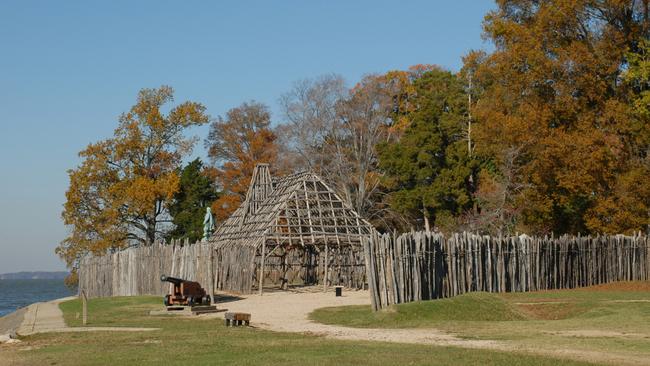
“What had begun as a settlement of 104 men and boys was reduced to 38,” says Amy Stallings, a university lecturer and guide at Historic Jamestowne, site of the original fort.
More misery followed when the Powhatan besieged the growing settlement two years later; archaeologists have unearthed evidence of cannibalism during these “Starving Times”. The survivors persevered, and life had improved immeasurably by the time Jane Vorbes opened The King’s Arms tavern in nearby Williamsburg a century and a half later. By now the American Revolution was under way; loyalists would gather here to chew fat of both the intellectual and the edible kind.
“We basically overfeed everyone,” says the costumed server at the meandering, reconstructed establishment located in the preserved town centre, Colonial Williamsburg, the centrepiece of the state’s Historic Triangle. “That’s why you have to come upstairs and walk a lot – we sort of planned it that way.”

Chastened by stories of colonial-era hunger, I veritably inhale the “peanut soupe” and gobble the “onion pye” and slow-cooked choat (pork shank) served on heavenly cheese-butter grits. “Libations from the cellar” include the Two Shilling Red from Williamsburg Winery, and a chardonnay from Barboursville Vineyards near Charlottesville, two hours’ drive west, and the site of president Thomas Jefferson’s historic home, Monticello. While Jefferson failed in his winemaking attempts, modern-day viticulturists are winners. Charlottesville and Monticello American Viticultural Area were crowned international wine region of the year in Wine Enthusiast’s 2023 Wine Star Awards.
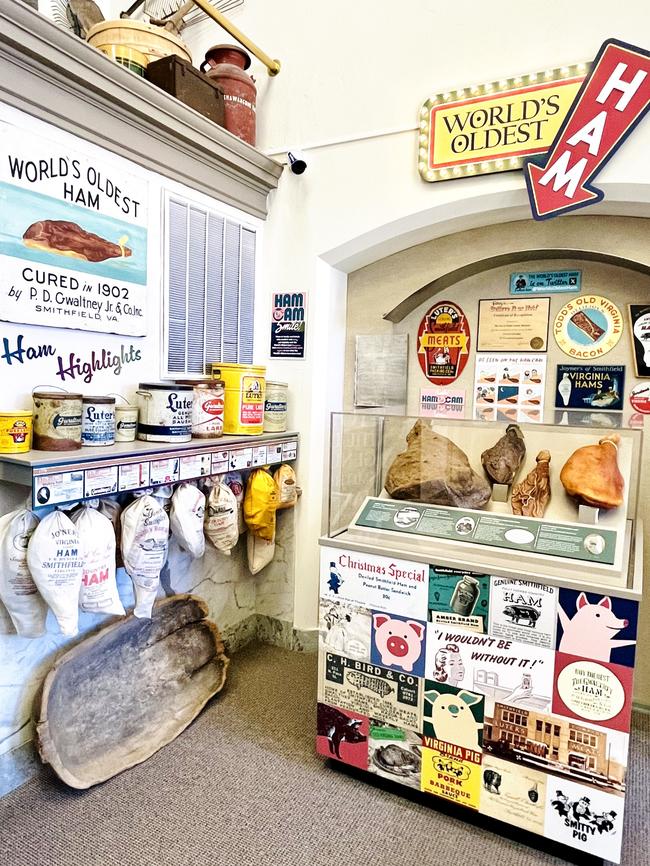
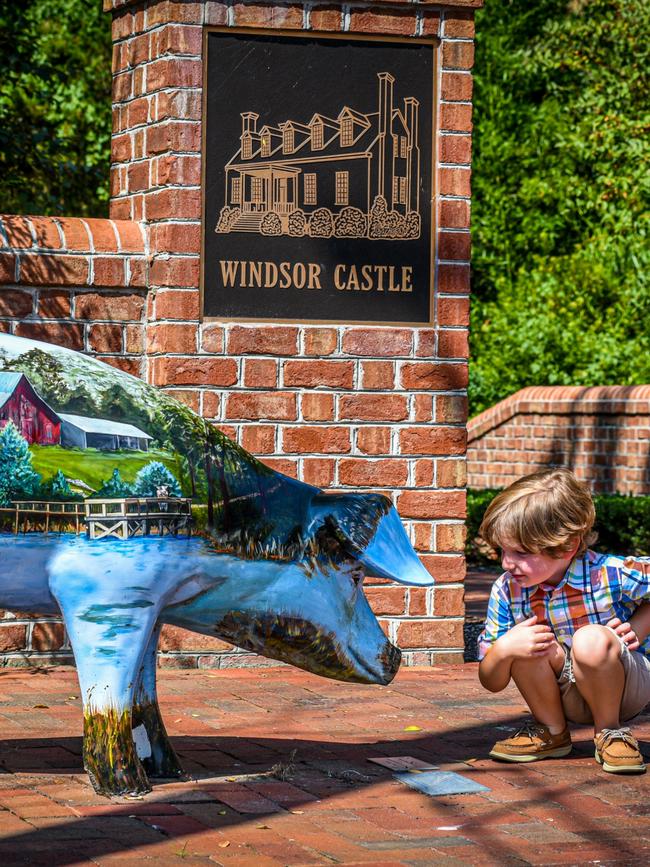
The swine imported from England, meanwhile, developed their own stellar reputation in Smithfield, located in Isle of Wight County along Virginia’s Salty Southern Route. Many of the turreted houses still lining Main Street had a smokehouse, says Kathy Mountjoy, who grew up in the 18th-century Boykin’s Tavern (now a museum) and today co-ordinates Smithfield’s Life of HAM tours. Life-size statues of pigs painted by local artists lead us along the town’s Porcine Parade; they call to mind the settlement’s original herds, which proliferated upriver on Hog Island.
“They would eat the leaf mulch and acorns and things out there, and that would give their meat a sweet flavour,” Mountjoy says. “And that’s why Virginia ham became popular.”
The flavour was enhanced by peanuts brought from South America with the Africans forced ashore in the 18th century. Nicknamed “goobers” (from “nguba”, the Africans’ term for peanuts), the crop was farmed and eaten by these enslaved people, and used for livestock feed. Only later did this “poor man’s food” become a valuable commodity.
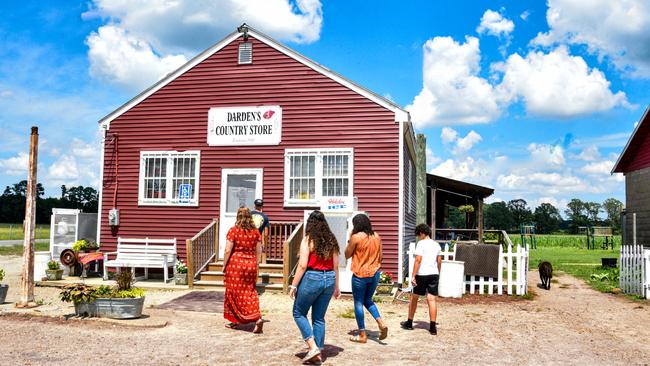
“After the Civil War a lot of northerners had come south and tried peanuts for the first time,” says Rachel Popp, curator at the Isle of Wight County Museum. “There is suddenly this boom in the peanut industry.”
Peanuts and pork made for an unctuous – and profitable – pairing; Virginia hams were a hit back in England. Most notable was the Genuine Smithfield Ham, perfected by P.D. Gwaltney and so-designated only when cured within the town limits. The last such specimen was produced earlier this year by global conglomerate Smithfield Foods, which was founded here by the Luter family in 1936. It’s displayed at the museum beside the world’s oldest edible ham, a wizened hock that was cured by Gwaltney in 1902 and is the star of its own “ham cam” (it also has its own Twitter/X account).
Mercifully, the ham at Taste of Smithfield, the town’s signature eatery, is plump and vibrant. Should I try the apple BLT or the hushpuppies with country ham butter? Actually, I rather fancy the green salad loaded with crispy bacon, almonds and bourbon-soaked cranberries. The spiked fruit recalls history yet again. Centuries ago one of those early English settlers brewed whiskey in Jamestown, replacing barley with corn traded from the Powhatan.
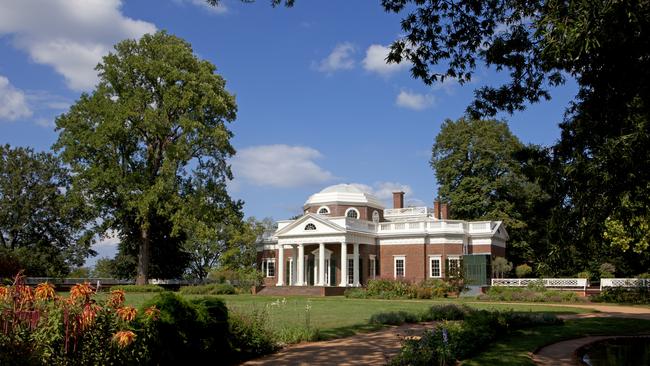
I’ve wisely left space for the ham biscuits – rolls filled with faintly astringent, delicately smoky ham – awaiting me at Dardens Country Store on the outskirts of town. The clapboard cabin has been a ham lover’s utopia since opening in the early 1950s. Carrie Darden
Turner, who now runs the family business, leads me across the road to a smokehouse cloudy with vapour and heaving with hocks.
“There’s about 1300 hams here, and we sell them all out of our store,” she says. “They’re laid in salt for about six weeks and then coated in black pepper, and this time of year is when we do the smoking … The ham that was put in salt in February will carry us through to Thanksgiving and Christmas.”
Tonight I swap the smokehouse for the estuary during dinner at The Restaurant at Smithfield Station, an inn perched on the banks of the Pagan River. I savour blue crab soup laced with sherry, and oysters sauteed with crabmeat, lemon and garlic and crusted with breadcrumbs. For cocktails the waiter recommends the Pagan River Pain Killer, a blend of rum and pineapple – a fruit once displayed in Virginia homes as a symbol of hospitality. But there’s no pain to be killed; the sun is dipping across the channels, my belly is full, the morrow will charm my tastebuds anew.
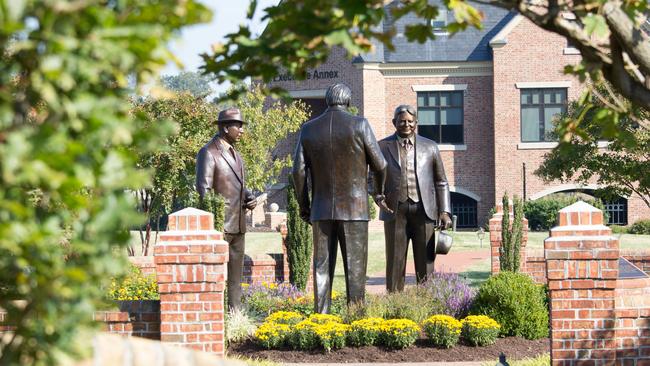
The Salty Southern Route continues to nearby Suffolk, which supplanted Smithfield as the peanut capital thanks to its railway access, and the runaway success of Planters Nuts and Chocolate Company, now global behemoth Planters. The company’s co-founder, Italian migrant Amedeo Obici, started out at age 19 with a roasting cart in Pennsylvania; in 1913 he relocated to Suffolk to be closer to the region’s burgeoning peanut industry.
“I’ve grown up around peanuts all my life,” says Robert Beale, who runs Planters Peanut Centre with his wife, Faye. “Right across the road from my (childhood) house was a huge peanut (farm). When they were harvesting we used to go down and run through all the dust.”
Faye Beale grew up around peanuts too; her father used to run this store. Now those refined snacks are displayed beneath the glass countertop: salted, roasted, chocolate-dipped, or slathered in butter-toffee. A vintage roaster from the original Planters factory stands in a corner; nearby is an iron figurine of Mr Peanut, the character designed by local teen Antonio Gentile in response to a logo design competition run by Obici in 1916. Gentile won $US5, lifelong support from Obici (the youngster became a doctor), and universal recognition for his anthropomorphised “goober”, which has endured in popular culture and as the Planters emblem.

The dusty, earthy peanut has been preserved, too, in The Smithfield Cookbook, a collection of recipes drawn from generations who grew up around modern America’s birthplace. Leafing through it later, I find instructions for boiling, parching and sugaring peanuts, for making peanut soup, peanut butter, peanut rice. There are dishes that no doubt fortified those early arrivals – turtle stew and baked oysters, fried squirrel and rabbit pie. And finally, on page 115, I find the classic I failed to sample on my journey through Virginia: burgers. “A delicious way,” writes the contributor, “to use up that extra deer meat.”
In the know
The Historic Triangle, Salty Southern Route and Charlottesville are accessible by car or rail from Washington DC.
Smithfield’s Life of HAM tour is $US10 ($15) a person.
Top picks for accommodation include Williamsburg Lodge, which has rooms from about $US180 a night; Smithfield Station, $US160 a night; Clifton in Charlottesville, $US239 a night; The Pinner House in Suffolk, $US239 a night.
Catherine Marshall was a guest of the Virginia Tourism Corporation.
If you love to travel, sign up to our free weekly Travel + Luxury newsletter here.

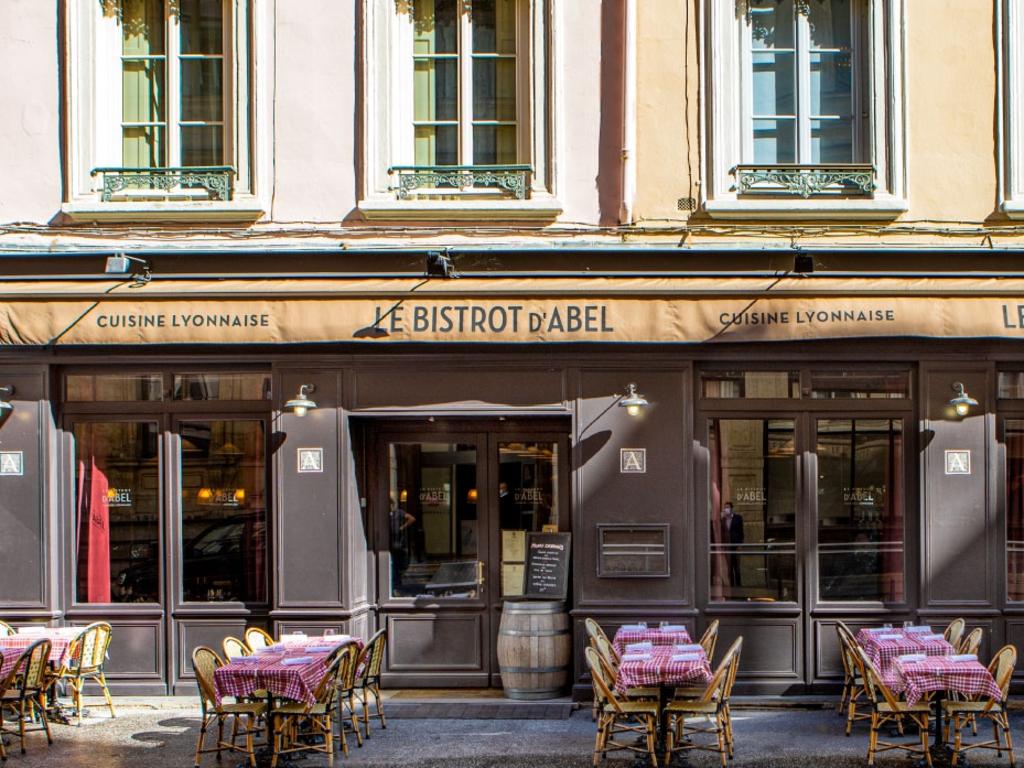
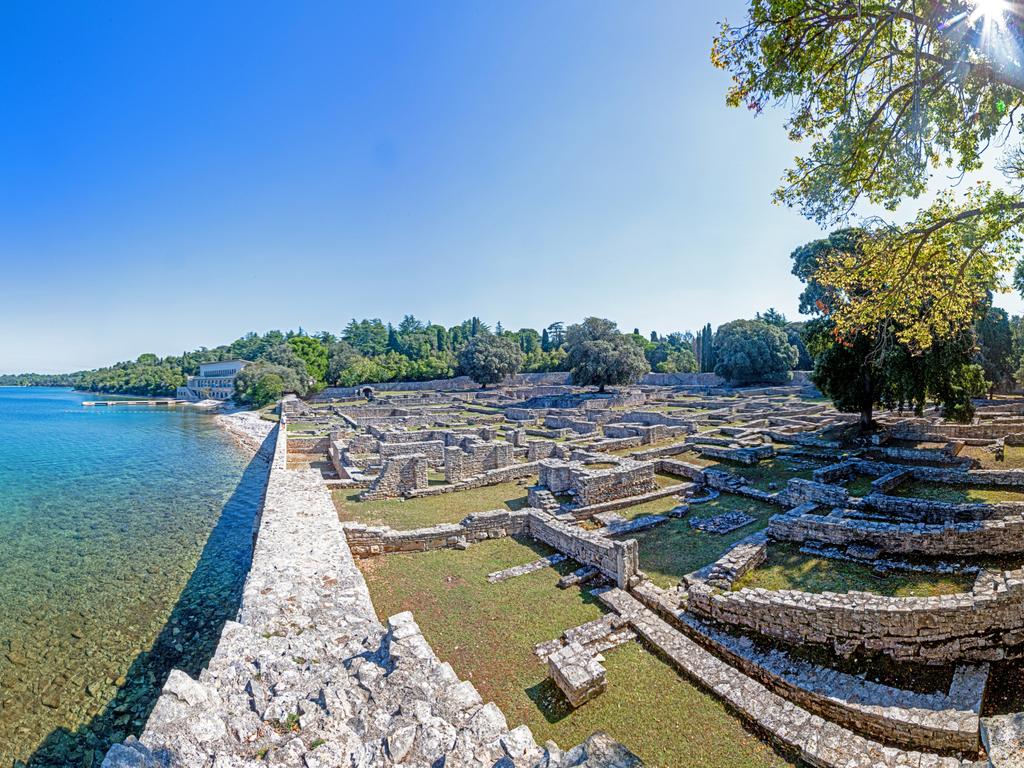

To join the conversation, please log in. Don't have an account? Register
Join the conversation, you are commenting as Logout